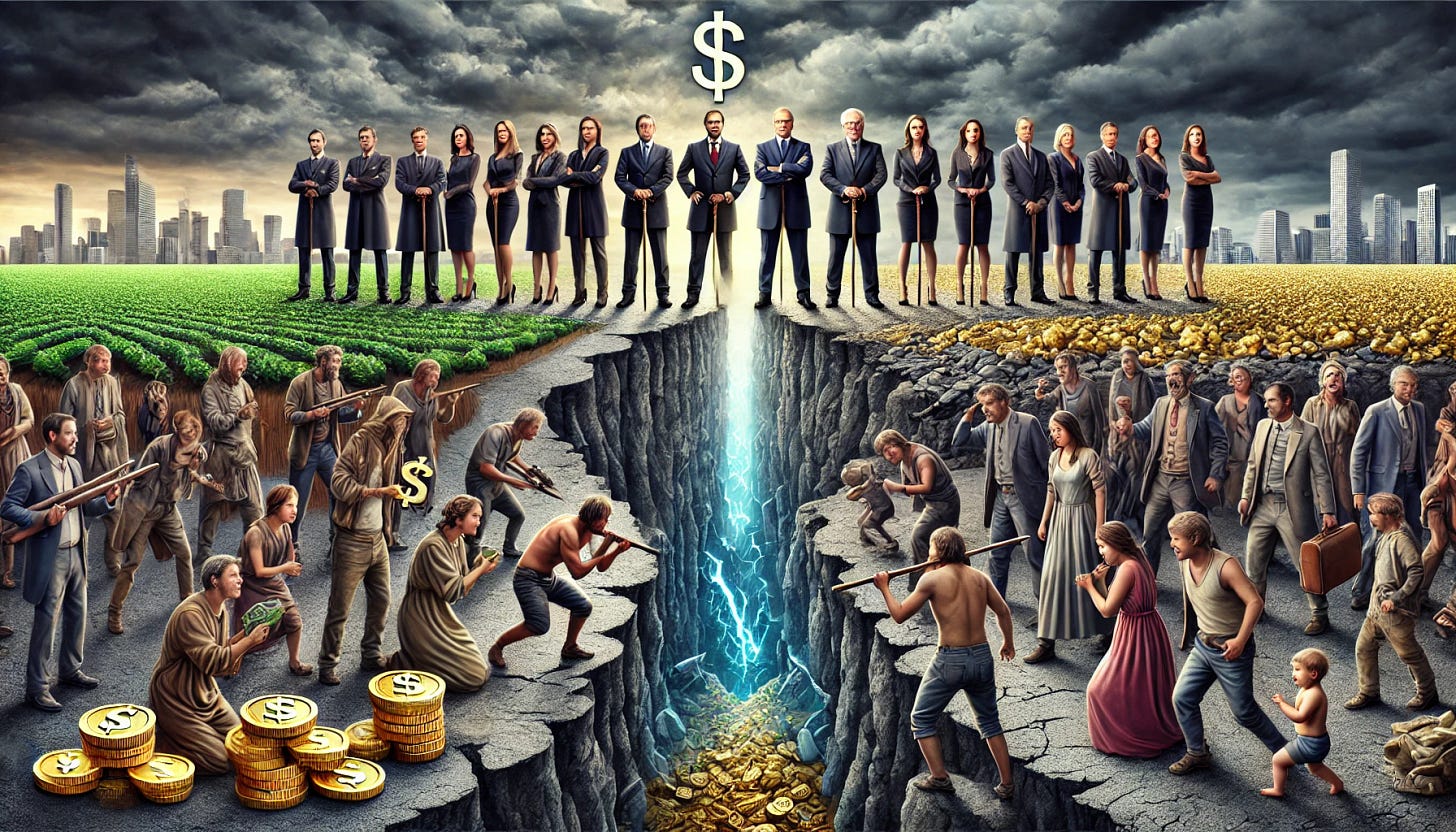Common Threads in Societies That Collapse
Introduction to Collapse Part I - The Past
History is a tale of rise and fall, of civilizations that flourished, only to eventually collapse. As Henry Kissinger once said:
“Every civilization that has ever existed has ultimately collapsed. History is a tale of efforts that failed, or aspirations that weren’t realized. So, as a historian, one has to live with a sense of the inevitability of tragedy.”
I’m going to cover three broad topics in this introductory series on collapse. We are going to look to the past to understand why societies collapse, the present for warning signs, and the future to understand how we might respond.
See Also Part II and III of this Series
I became particularly interested in this topic a few years ago when I started noticing that we are completely ignoring harsh realities… many ticking time bombs that would threaten global society. I lived in Las Vegas, Nevada for many years, a place where Lake Mead, the primary water supply for the entire region, is 75% empty and dropping. Despite this and other warnings, local and national leaders insist on moving forward with unprecedented growth, adding a million more people to the city in the next few decades.
I started wondering why a society would simply ignore what is happening before their very eyes. It turns out that this is a common thread throughout history as societies collapse. Jared Diamond offers several insights into this with relevant examples in his works, including his Ted Talk (embedded below), and his book “Collapse.”
I’m going to highlight three common threads Diamond points to among collapsing societies that are most prescient to our situation: rapid collapse after societal peak, the danger of strongly held social beliefs, and conflict between the short-term interests of elite decision-makers and the long-term interests of the society as a whole.
Rapid Collapse
Rapid collapse often comes in as few as a decade or two after a society hits its peak in power and population. The Soviet Union is an example where they achieved the pinnacle of their global power in the 1980s and quickly collapsed by the early 1990s. Or one could look to the Classical Maya civilization where collapse occurred within a decade or so of their peak population and construction of their greatest pyramids. A third example would be The Western Roman Empire, a significant power through the 4th Century, until it experienced a rapid decline within just a few decades during the 5th century. There are many more.
What does this mean? The rapid increase or decrease of certain trends are an indicator of the likelihood of collapse. By examining the rate at which critical factors (like resource depletion, population growth, or political instability) are changing, one can gauge whether a society is moving towards a potential crisis. A rapid increase in negative indicators or a rapid decline in positive indicators can be a warning sign.
At present time there is an acceleration of countless indicators we could call “ticking time bombs” that don’t at present moment show any signs of being confronted by global society. Not only is this fact troubling, but even if global society put them front and center in their priorities, our ability to address all of them seems highly implausible. It only takes one bomb going off to do significant damage.
Strongly Held Values
One of the paradoxes that societies run into prior to collapse is that the very values and beliefs that made the society strong and powerful do not serve them well when reaching tipping points. They often simply double down on the very beliefs that are causing the collapse. From that perspective, it’s easy to see why.
Jared Diamond points to the Greenland Norse society that collapsed in the 1500s. This society was held together by a strong commitment to religion and strong social cohesion. But this very fact made it difficult for them to change in the end. Rather than reserving diminishing resources for their resilience, they insisted on continuing to build cathedrals. Rather than praying, and disregarding their neighbors as savages, they could have learned from the Inuit people who were thriving in the colder conditions.
The present global empire is based on a foundation of very strongly held beliefs about power, growth, wealth, self-interest and individualism. They are the tenets of the global economy. When this global society is then presented with information that conflicts with those tenets, such as the Limits to Growth, environmental degradation, mass inequality, these threats are often ignored and ridiculed. This is a recipe for disaster.
Short-Term Gain vs. Long-Term Wellbeing
Societies that collapse typically have an internal conflict between the short-term interests of the powerful rule-making elite and the long-term wellbeing of the society as a whole. This becomes a particularly challenging problem when the ruling elites are able to insulate themselves from the consequences of the damage done.
Among the Greenland Norse society, competing chiefs wanted to outcompete neighboring chiefs. So they engaged in deforestation and exploitation of labor at its max. They refer to this as flogging the land. These practices were obviously contrary to the long-term interests of the society and contributed to its collapse.
Of course this problem is acute in the United States today. The ethics of business and even the civil laws encourage or require that corporate officers prioritize short-term profits over any other cause. This includes any expense to the ecology, and to the wages of laborers. Without question they believe they can and should continue to do this despite the ticking time bombs threatening our long-term wellbeing. Government policy predominantly supports this ethos.
Where We Are Headed
We can see each of these common threads from historical examples of collapse in present day society. This ought to be a warning to us that we are headed for rapid collapse and the low probability of escaping such a fate.
This may be unsettling information, but knowledge is power. Before you despair too much, consider that our fate and the fate of the empire aren’t necessarily entwined. Yes, the Mayan empire collapsed. The Mayan people, however, carried on in more sustainable numbers, returning to simplicity and village life. Collapse isn’t historically the end. We cannot know the future, but we can live in the present to the best of our ability. That’s what this newsletter/blog is all about.
In Part II we will look more closely at the present day empirical data and a study that suggests we are on track for collapse within a few decades. I will then conclude this Introduction to Collapse with Part III on what sort of response we can practically take as individuals, small groups and communities to be resilient in the face of these dramatic changes.
Part II: Present Trends of a Collapsing Society






I have been thinking a lot about the characterization of ‘collapse’ of Cahokia from Graeber and Wengrow’s “The Dawn of Everything”. They see it as more of a willful abandonment than a helpless collapse. It makes me wonder how we can abandon the current structures of belief and practice collectively.
I was reading a dissection of the book and came across this passage. https://www.journals.uchicago.edu/doi/full/10.1086/720603
—- McAnany and Yoffee disagree, responding that while “living through some kinds of change is difficult, painful, or even catastrophic, … resilience is a more accurate term [than collapse] to describe the human response to extreme problems.”
Nice start to this series. We need broad thinking leadership and vision to escape the fate of collapse, not piece meal policy. Not likely to happen. The insulation of the wealthy either makes them blind to collapse or fully aware and creating it deliberately. Fewer people means extending dwindling resources, and a smaller populace to control. Cynical? Paranoid? I don't think so.